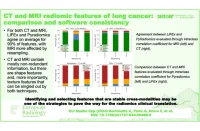Lung cancer remains the foremost cause of cancer-related mortality globally, with a disheartening overall 5-year relative survival rate of just 22.9%. However, the prognosis improves significantly when lung cancer is detected early. Patients diagnosed with localized lung cancer have a 5-year survival rate of 61.2%, in stark contrast to the 7% for those with advanced disease. Early detection is crucial, and screening methods such as low-dose CT (LDCT) have shown promise. The National Lung Screening Trial (NLST) revealed a 20% reduction in lung cancer mortality with annual LDCT screenings compared to chest radiography. Similarly, the Dutch-Belgium NELSON trial demonstrated up to a 61% reduction in mortality for female patients with LDCT screening compared to no screening.
Challenges in Managing Pulmonary Nodules Detected in Screenings
Despite the benefits, the follow-up of pulmonary nodules detected in LDCT screenings presents a challenge. While some nodules are so low-risk that no interval evaluation is necessary, larger nodules often require interval LDCT examinations or even biopsies to rule out malignancy. The NLST adopted a management strategy recommending follow-up for noncalcified nodules 4 mm and larger, with over 20% of participants having one or more lung nodules in their first screening round. Although 96% of these nodules were benign, follow-up examinations were necessary to ascertain this, highlighting the need for more efficient diagnostic methods.
The Need for Advanced Diagnostic Methods
Traditionally, radiologic guidelines and machine learning methods have focused on analyzing image features from individual CT images and comparing them with follow-up scans to assess nodule progression. However, these approaches often fall short in predicting the biological behavior of nodules, leading to unnecessary diagnostic tests and biopsies for benign nodules and delayed detection of malignancies. Given that diseases like lung cancer progress over time, diagnostic decision-making can be effectively modeled using sequential processes. This study proposes leveraging reinforcement learning (RL) algorithms to address this challenge. The aim was to develop a radiomics-based reinforcement learning (S-RRL) model utilizing serial LDCT scans, capable of predicting lung cancer progression and improving early diagnosis without waiting for follow-up interval testing.
Evaluating the S-RRL Model in a Retrospective Study
In a retrospective study involving 1951 participants from the NLST, an S-RRL model was trained and validated using serial LDCT scans from 1404 participants, including 372 with lung cancer. A baseline RRL (B-RRL) model, trained solely with baseline screening scans, was used for comparison. The performance of these models was evaluated on a test set of 547 individuals, including 150 with lung cancer, using metrics such as the area under the receiver operating characteristic curve (AUC) and net reclassification index (NRI). ццResults showed that the S-RRL model achieved a significantly higher AUC of 0.88 compared to the Brock model (0.84) and the B-RRL model (0.86). Additionally, the S-RRL model demonstrated superior risk stratification, correctly reclassifying 27% of patients compared to the Lung CT Screening Reporting and Data System (NRI of 0.29) and 23% compared to the Brock model (NRI of 0.12).
In conclusion, the S-RRL model, by integrating serial LDCT scans, offers a powerful tool for early lung cancer diagnosis and risk stratification. This approach has the potential to minimize unnecessary follow-up procedures for benign nodules while enhancing early detection of malignant ones, thereby maximizing the benefits of LDCT screening and improving patient outcomes. As lung cancer continues to pose a significant health challenge, innovative solutions like the S-RRL model represent a promising advancement in the fight against this deadly disease.
Source Credit: Radiology: Cardiothoracic Imaging
Image Credit: iStock








